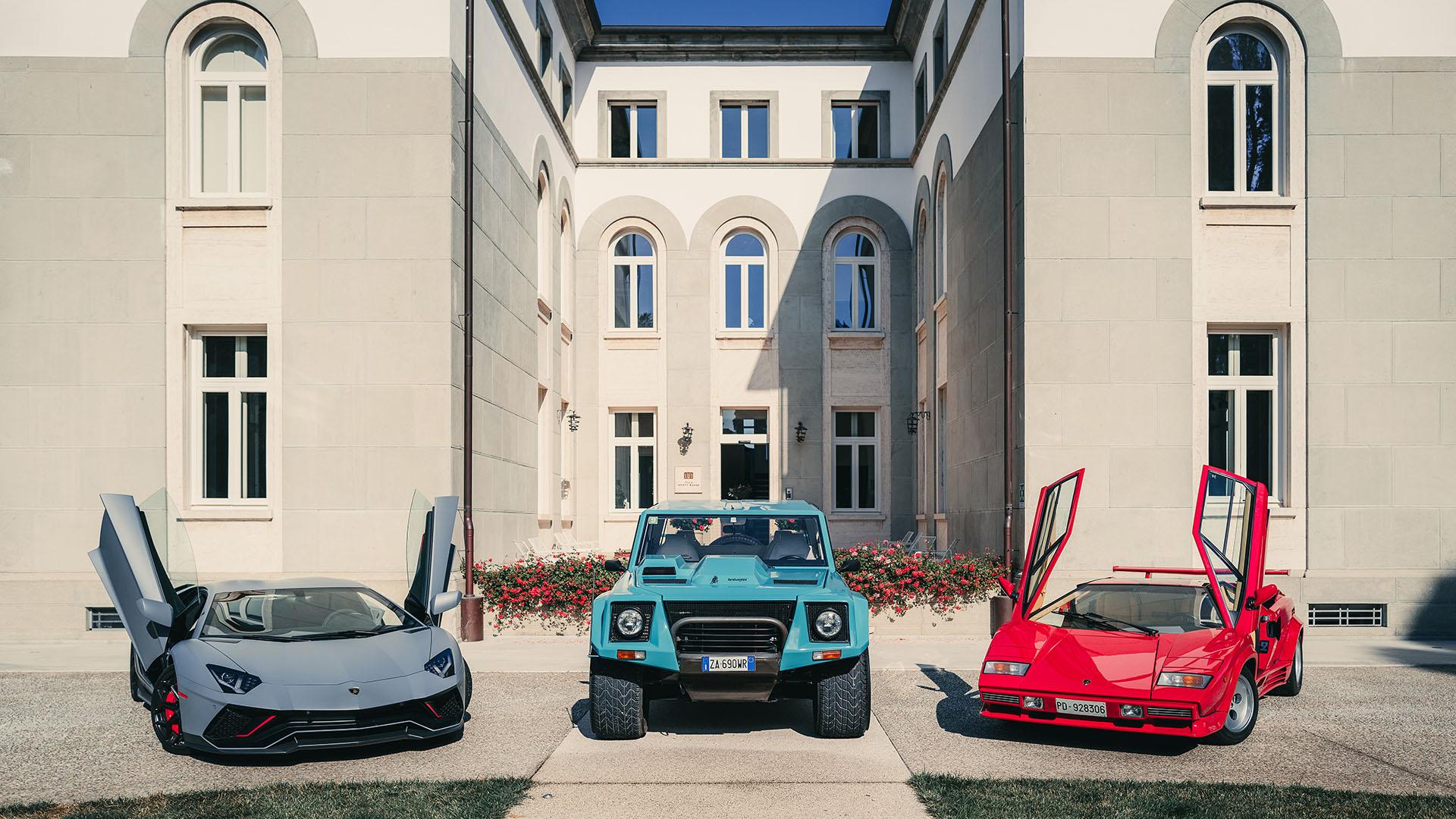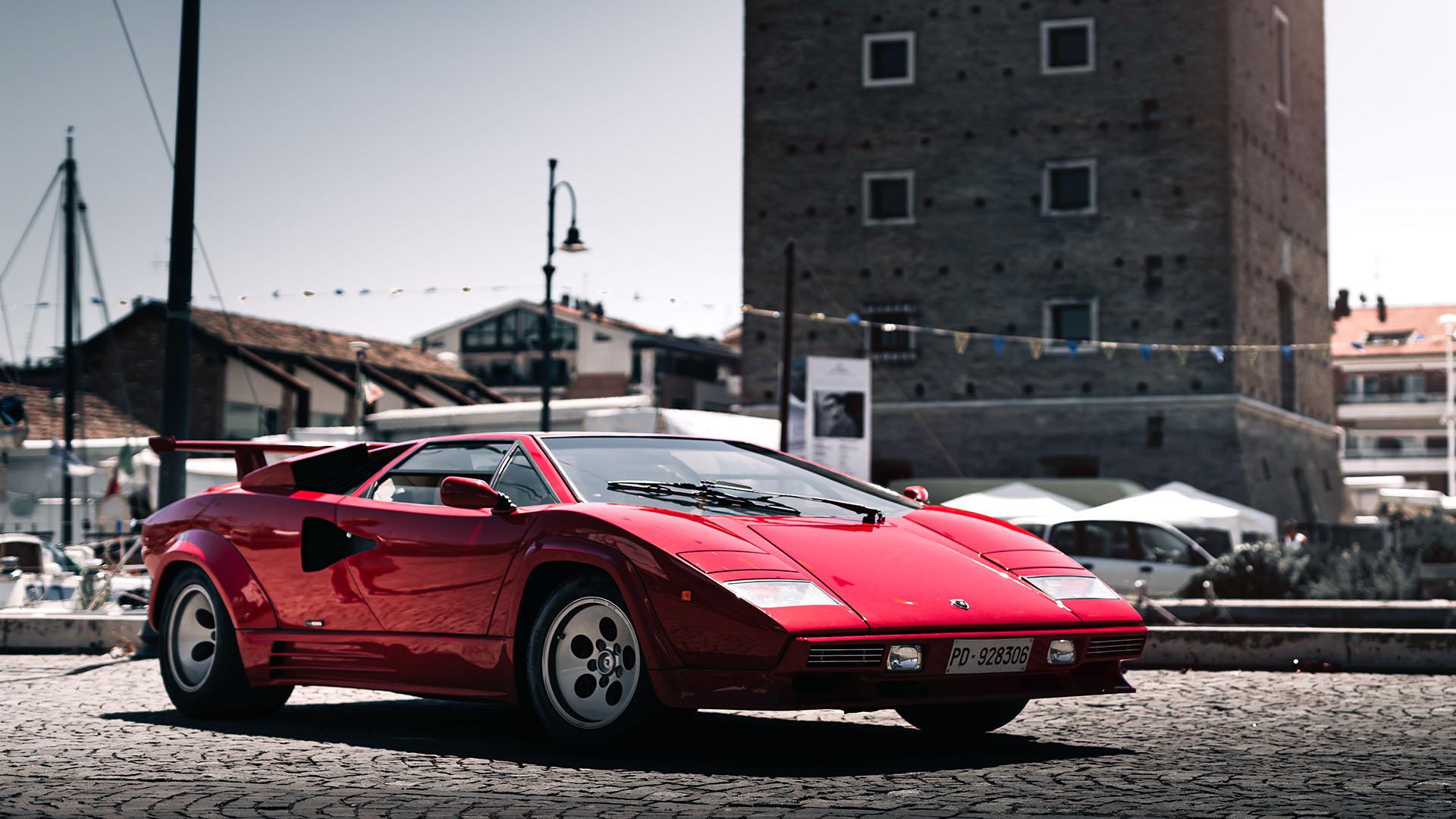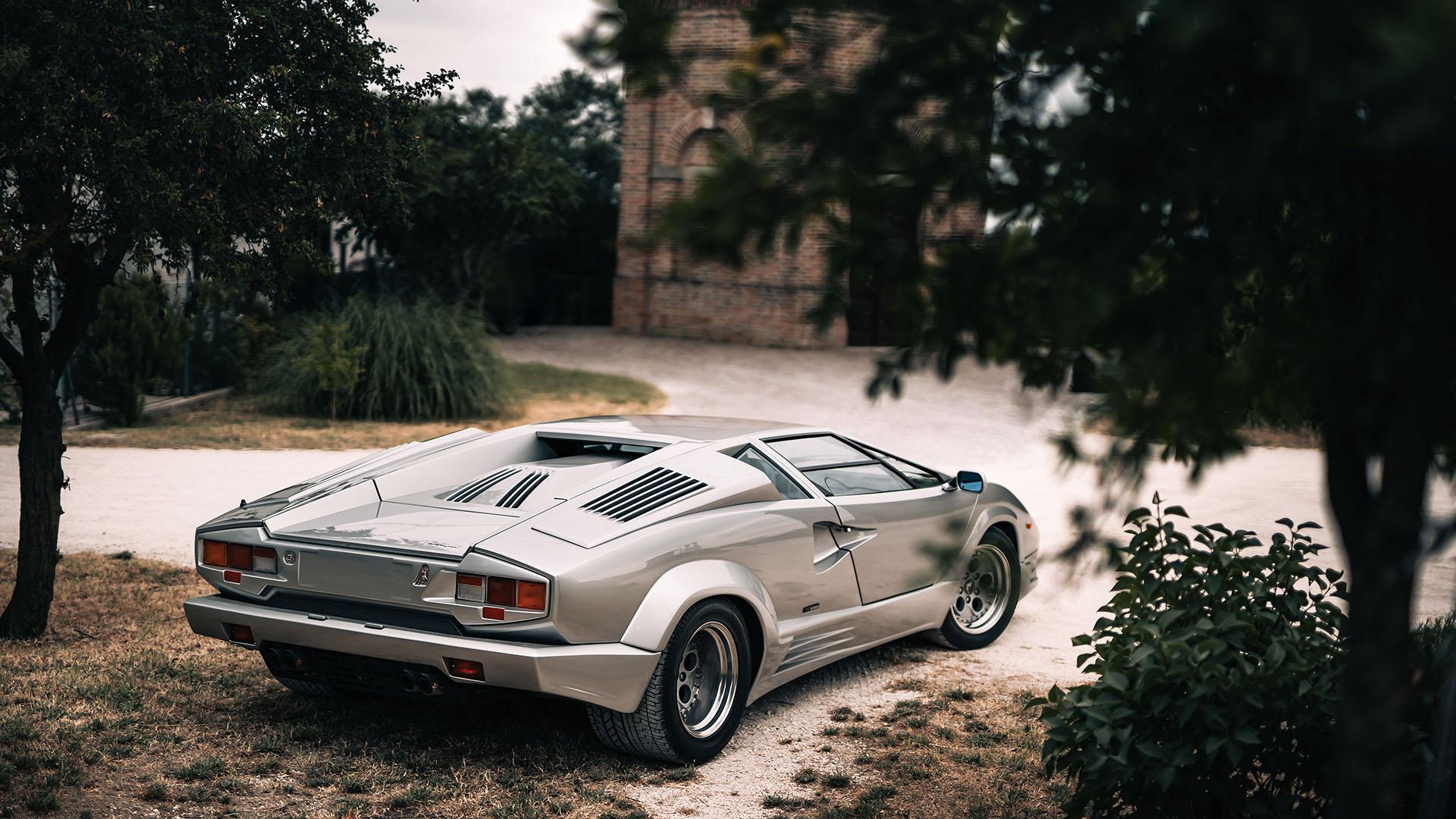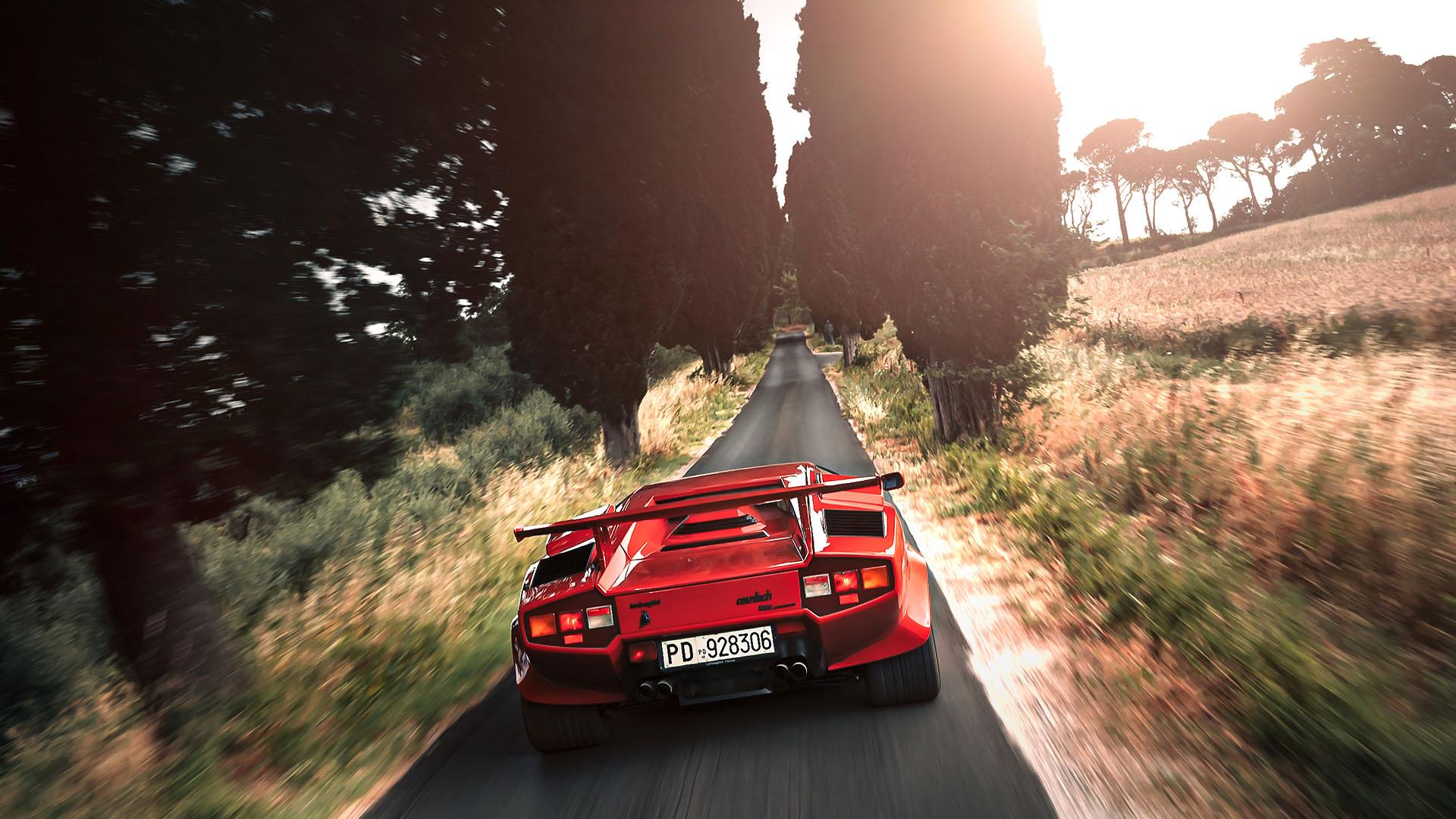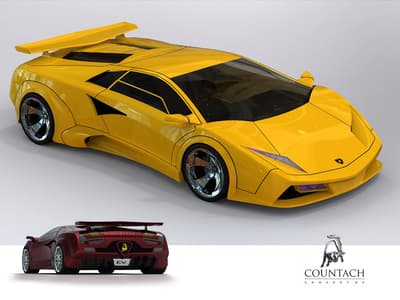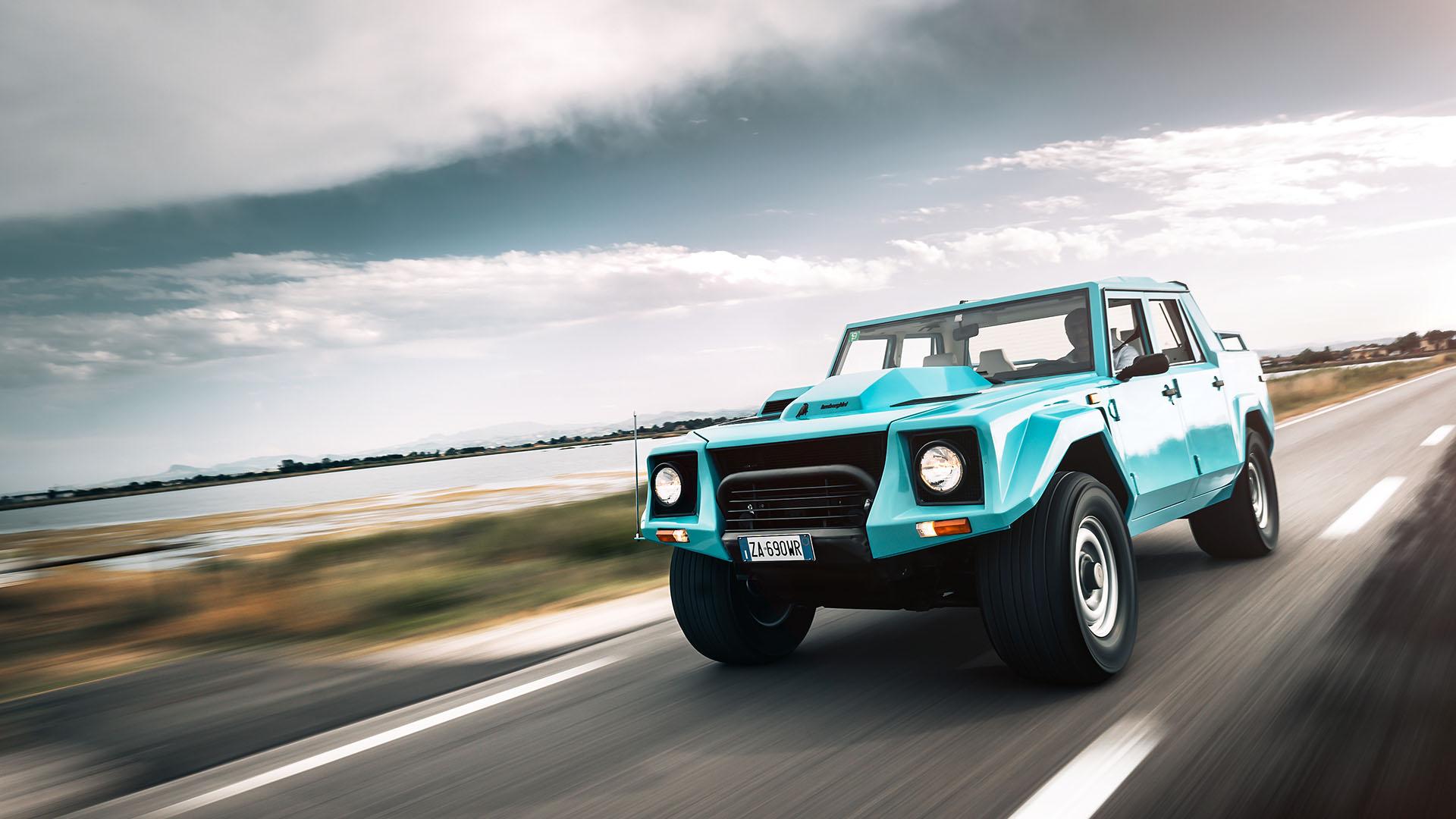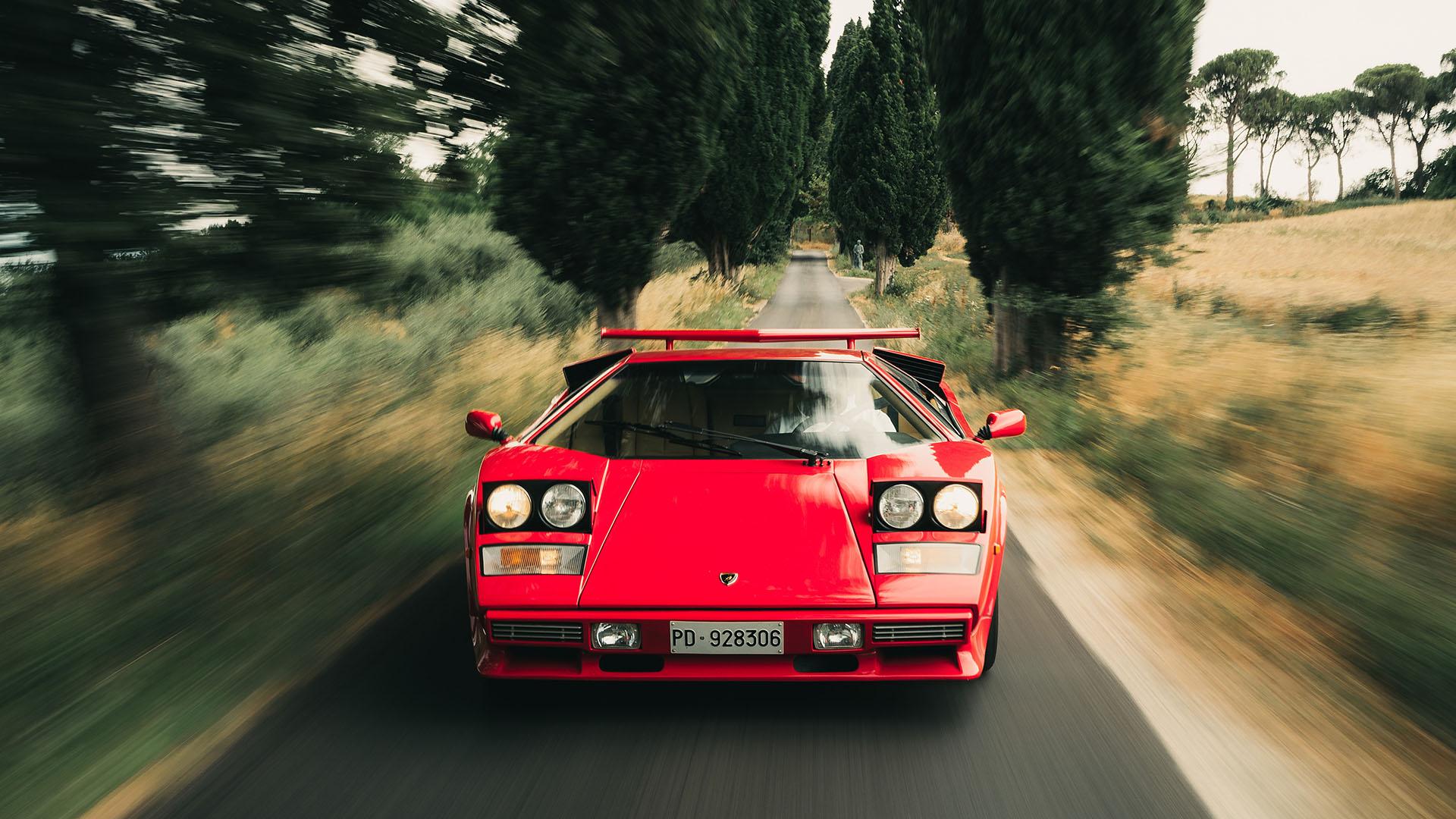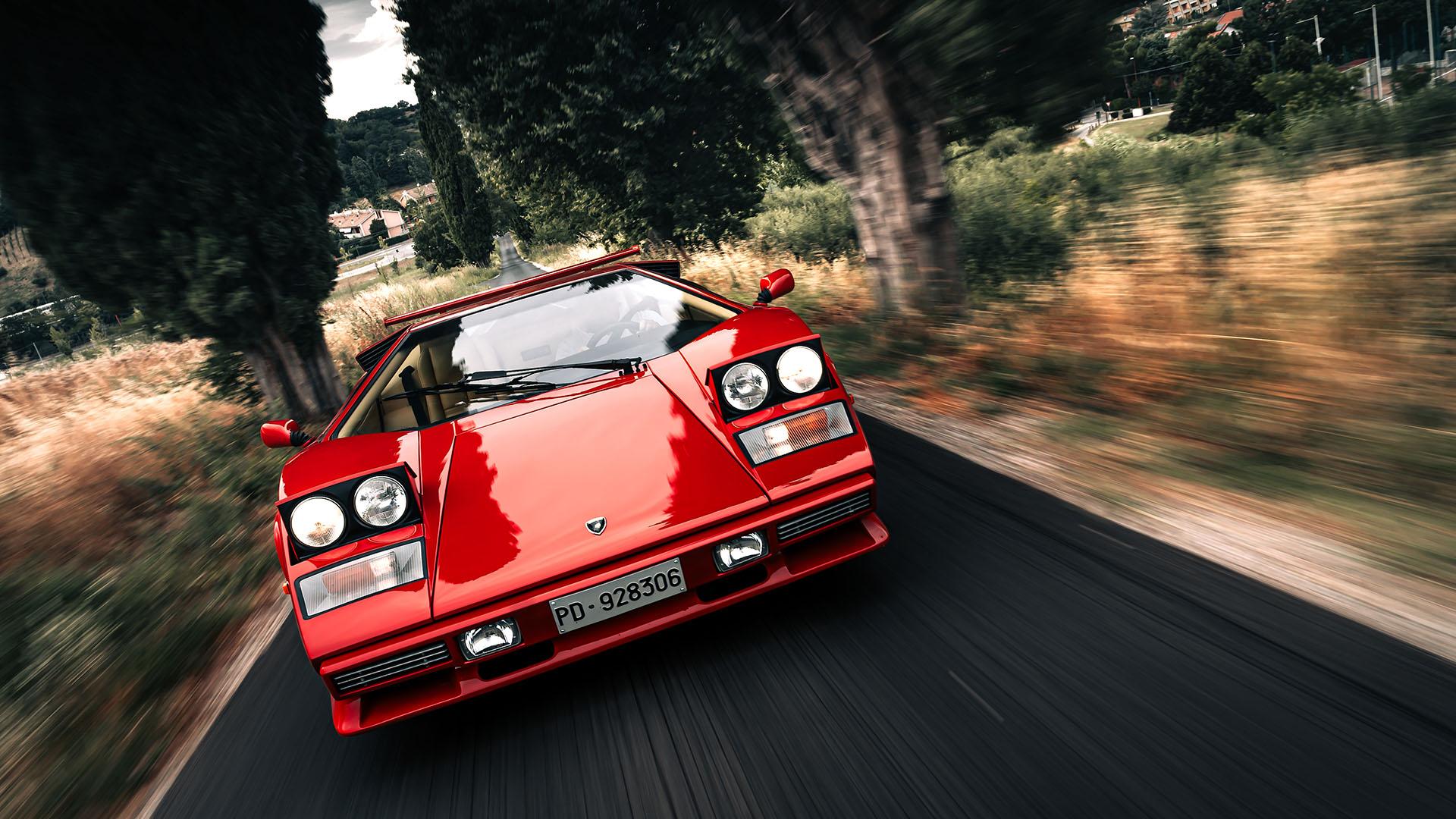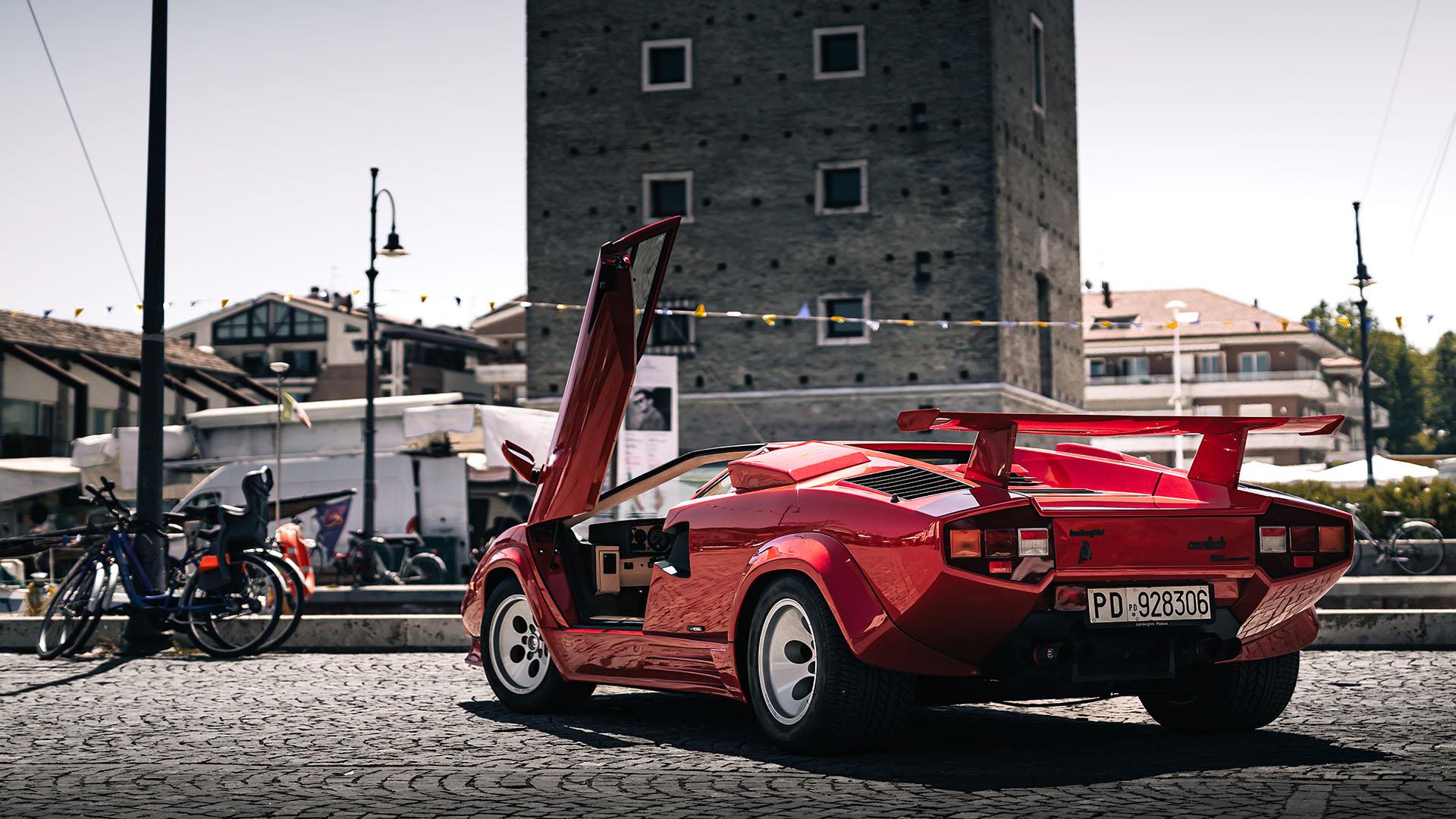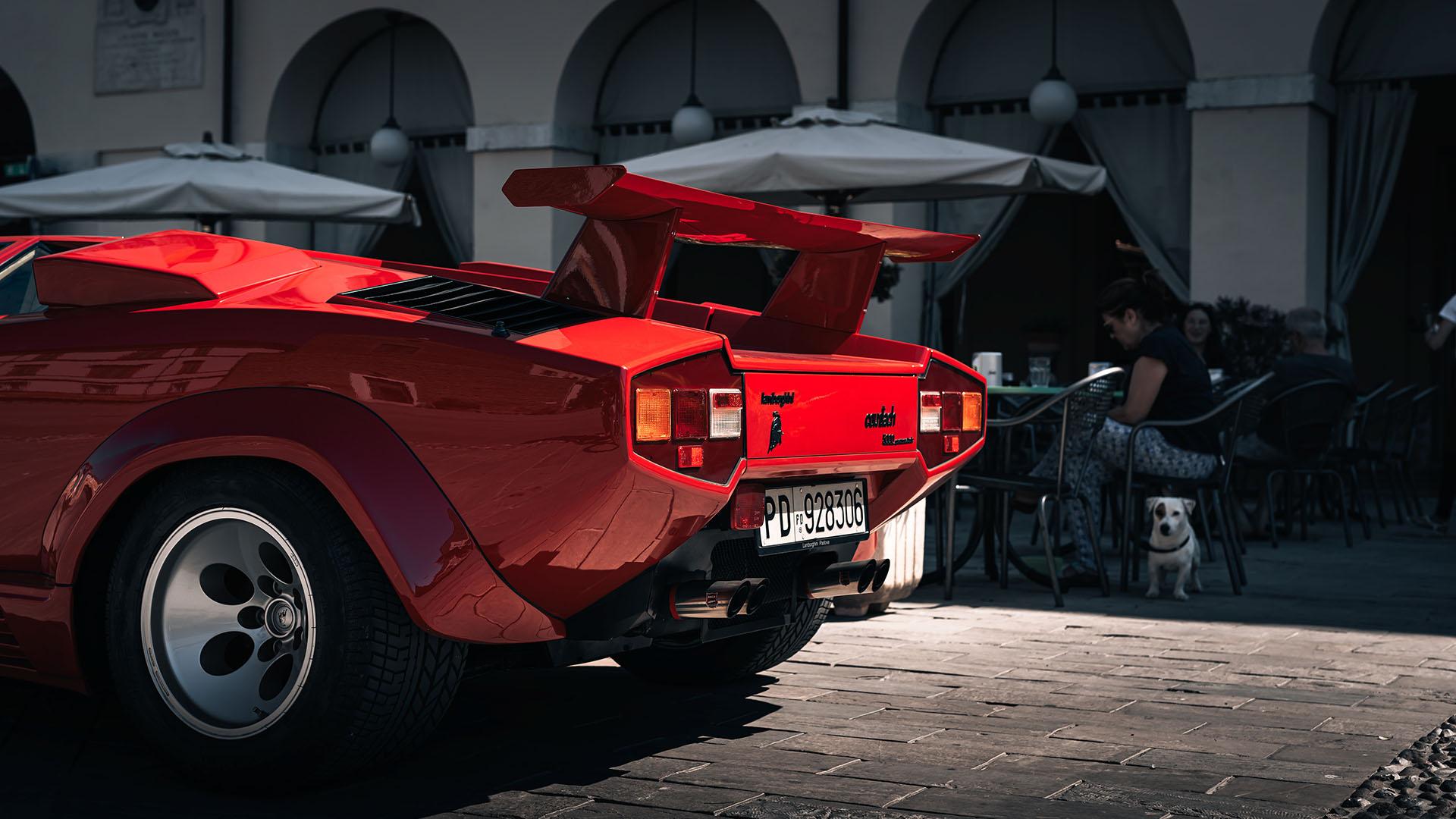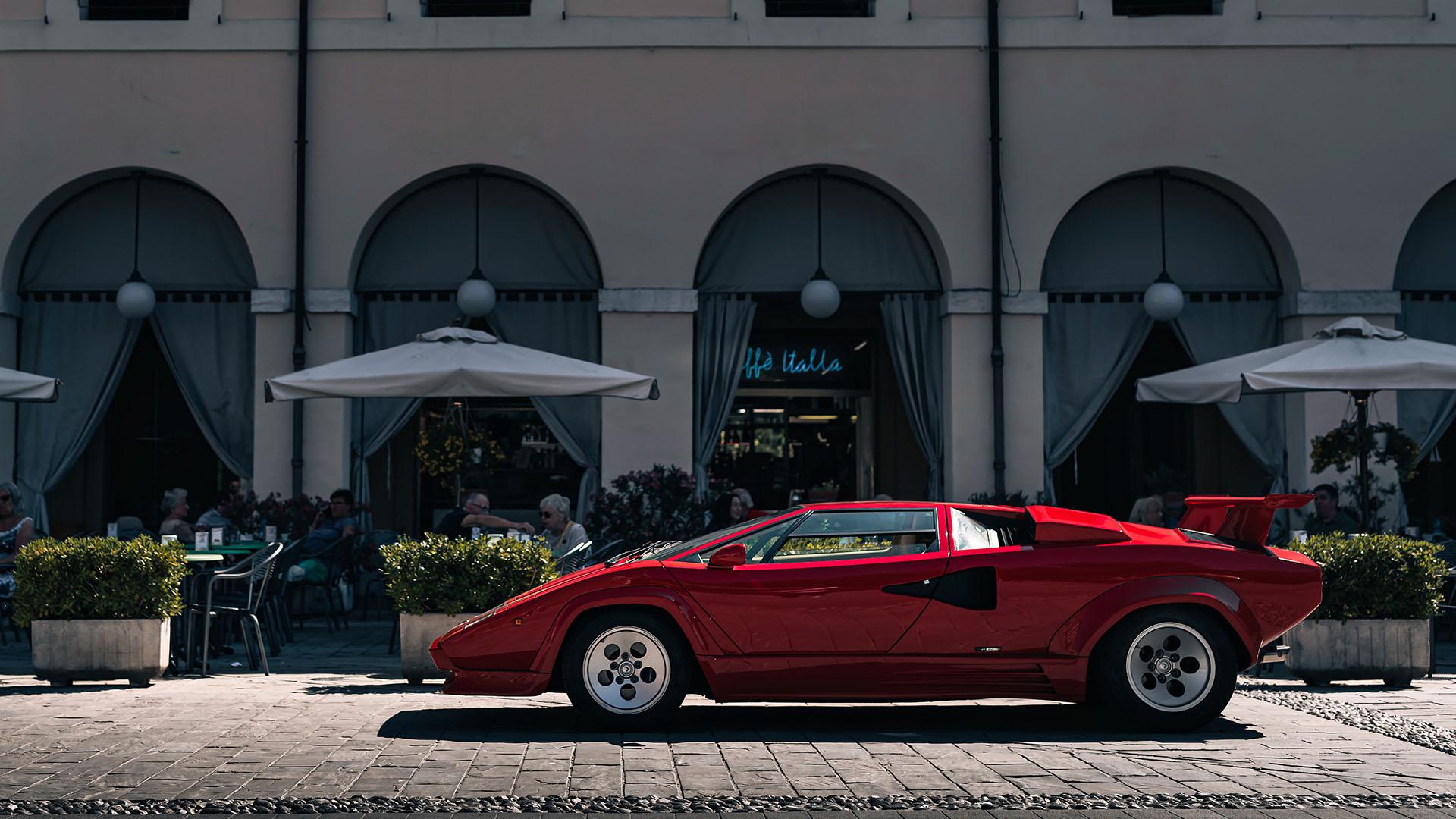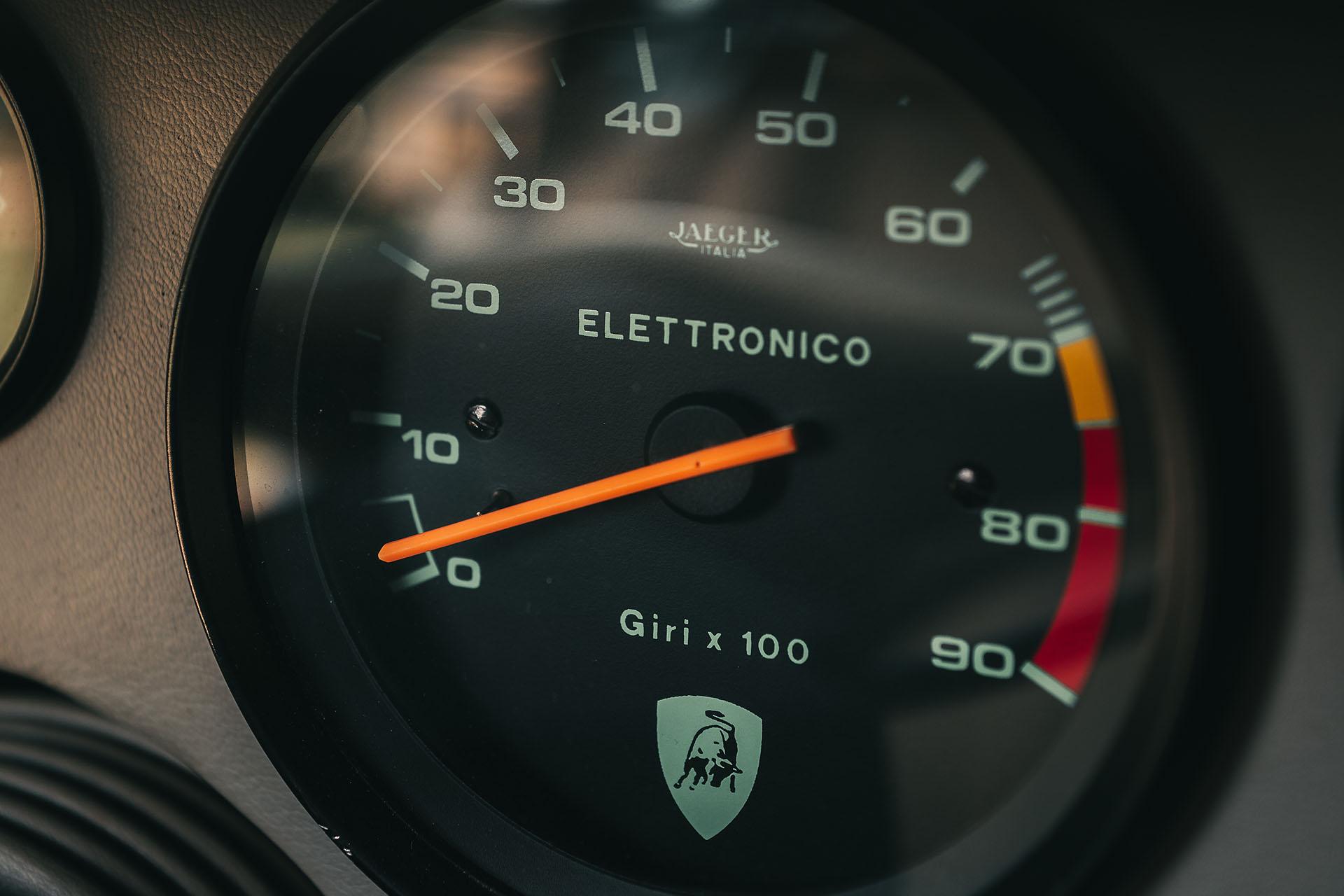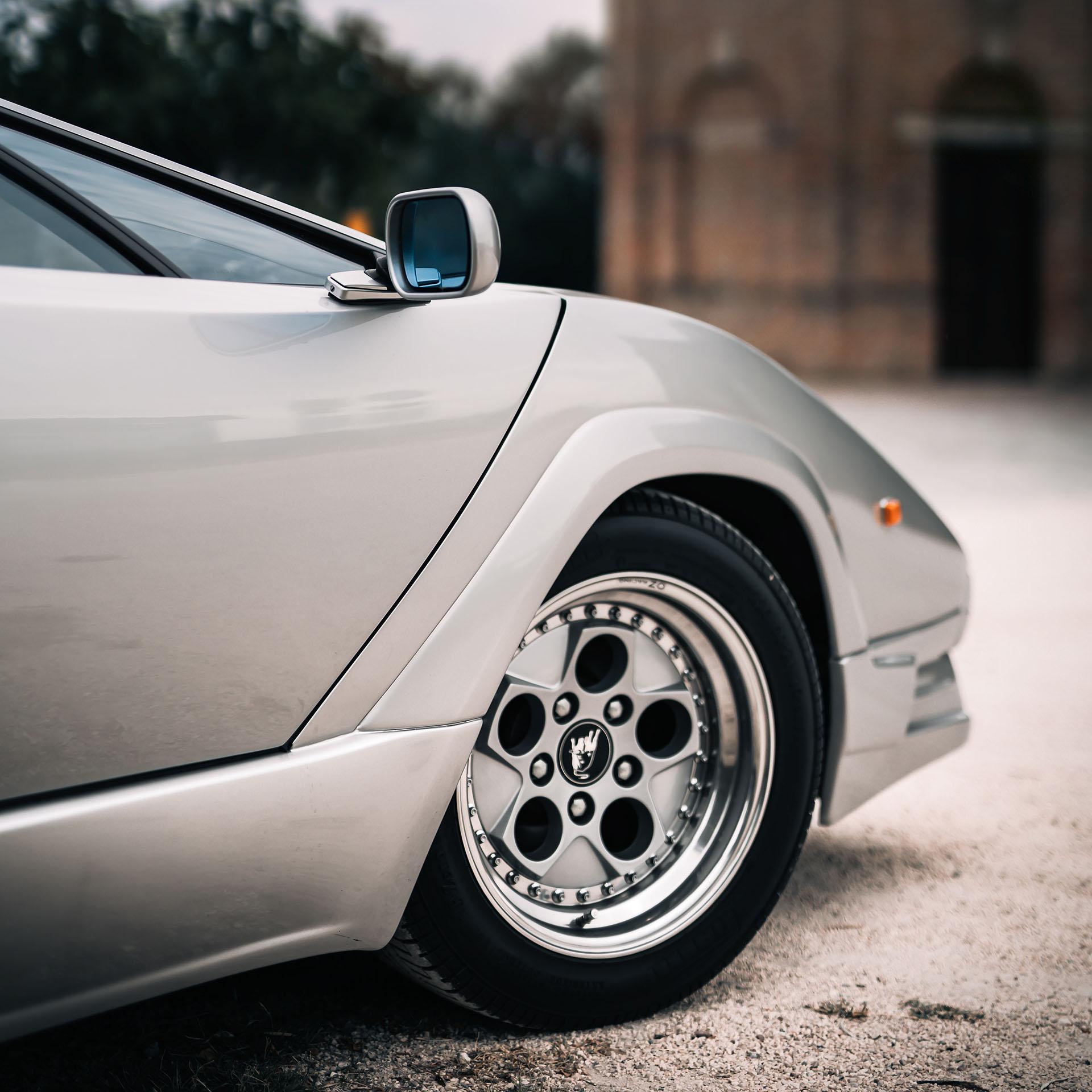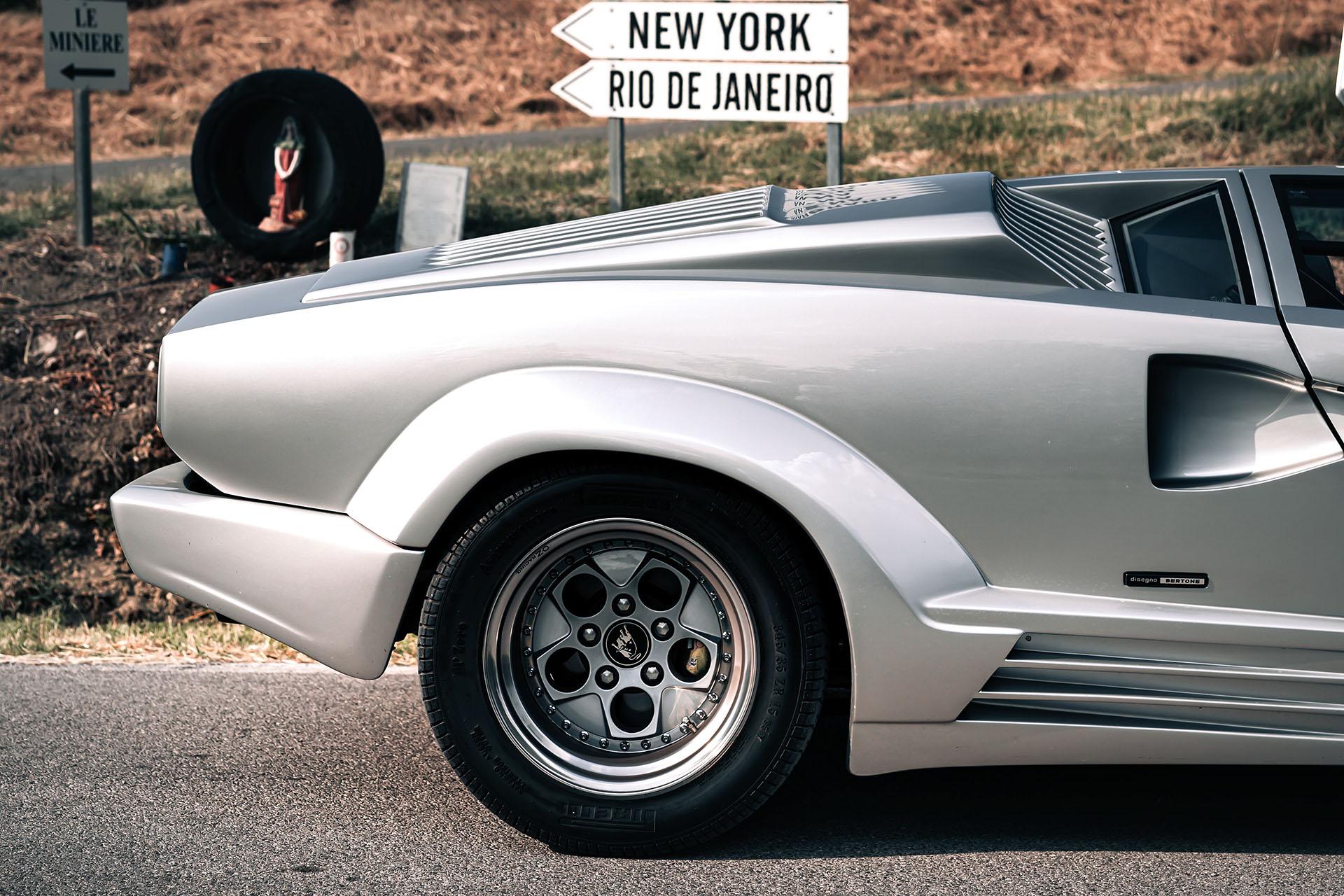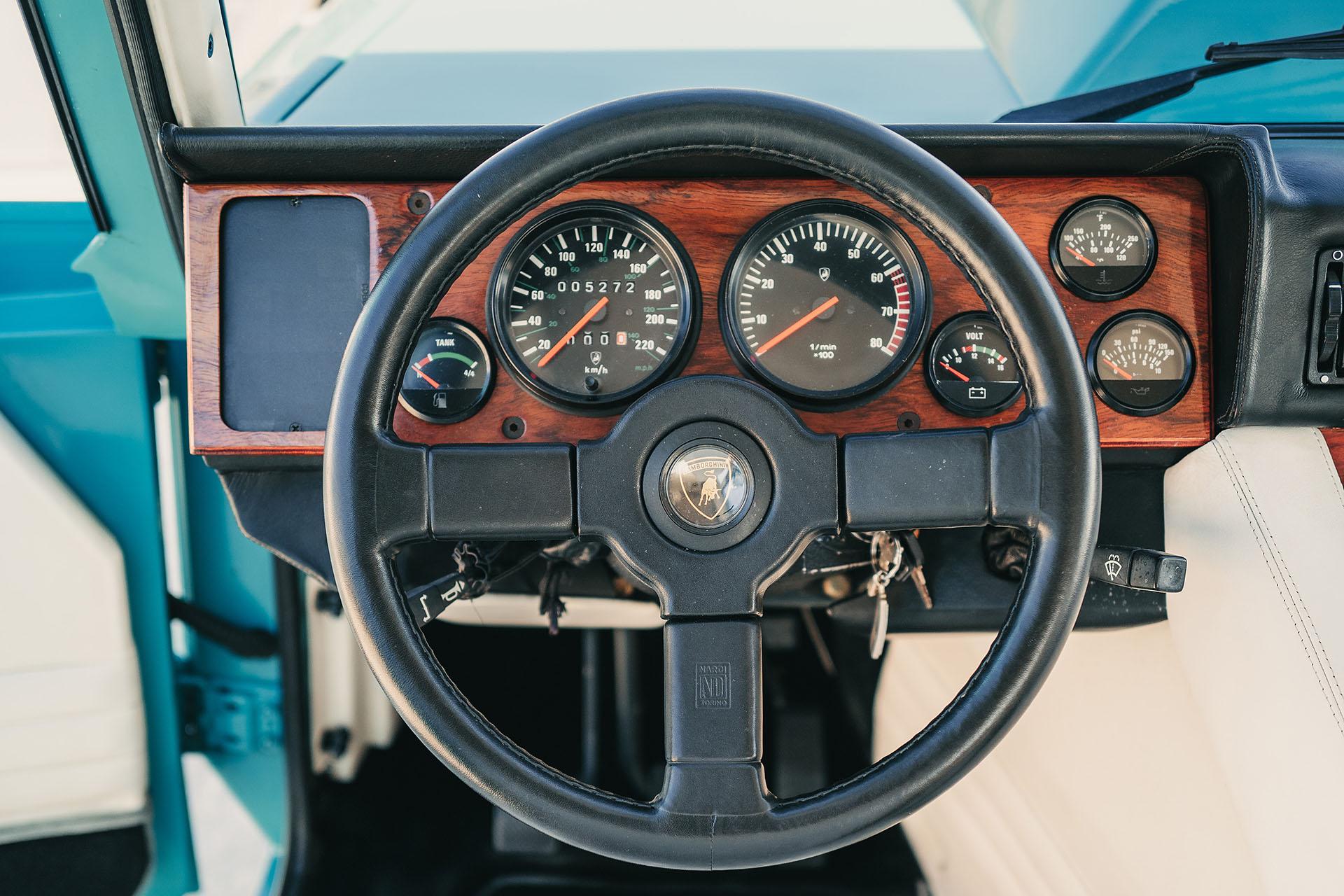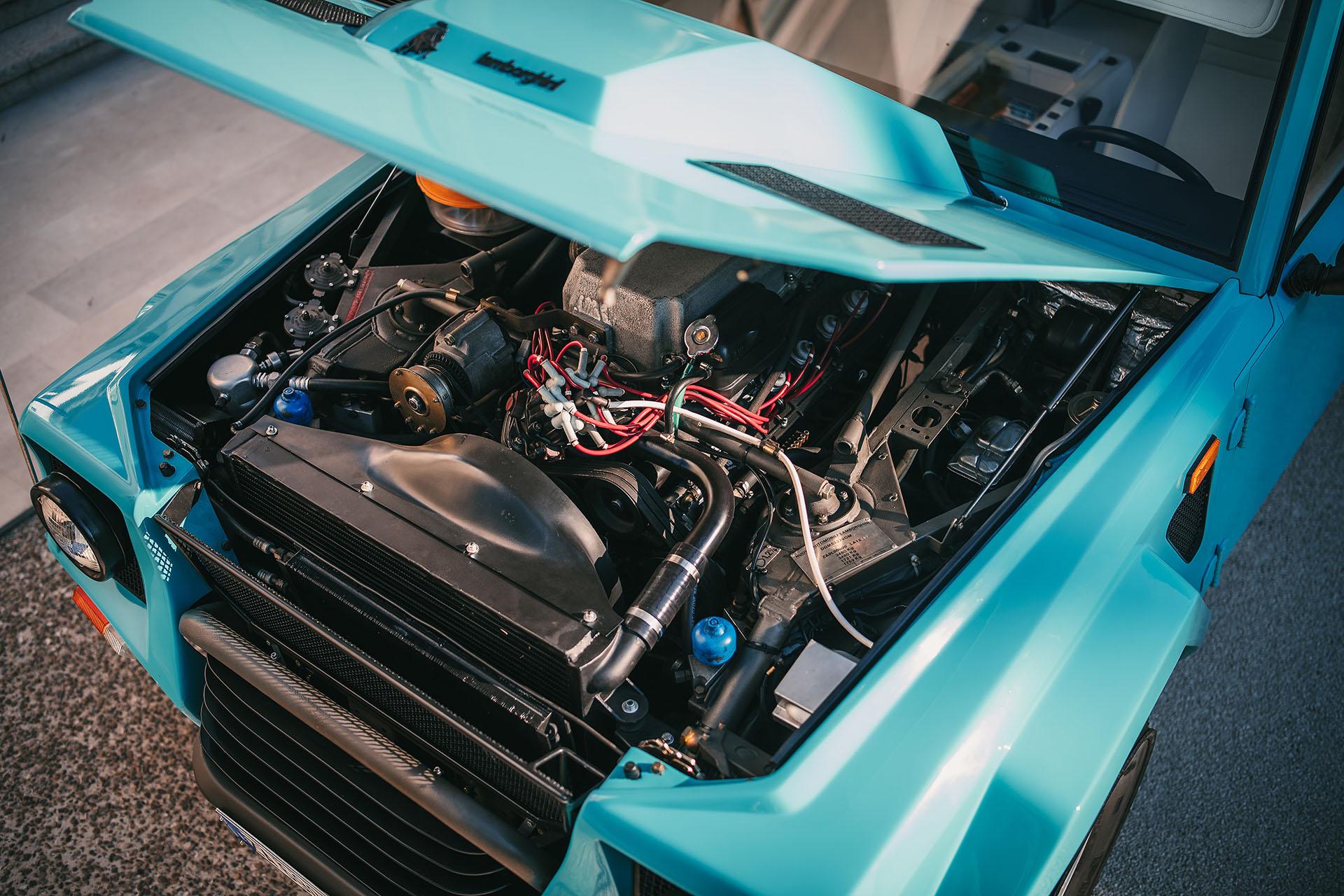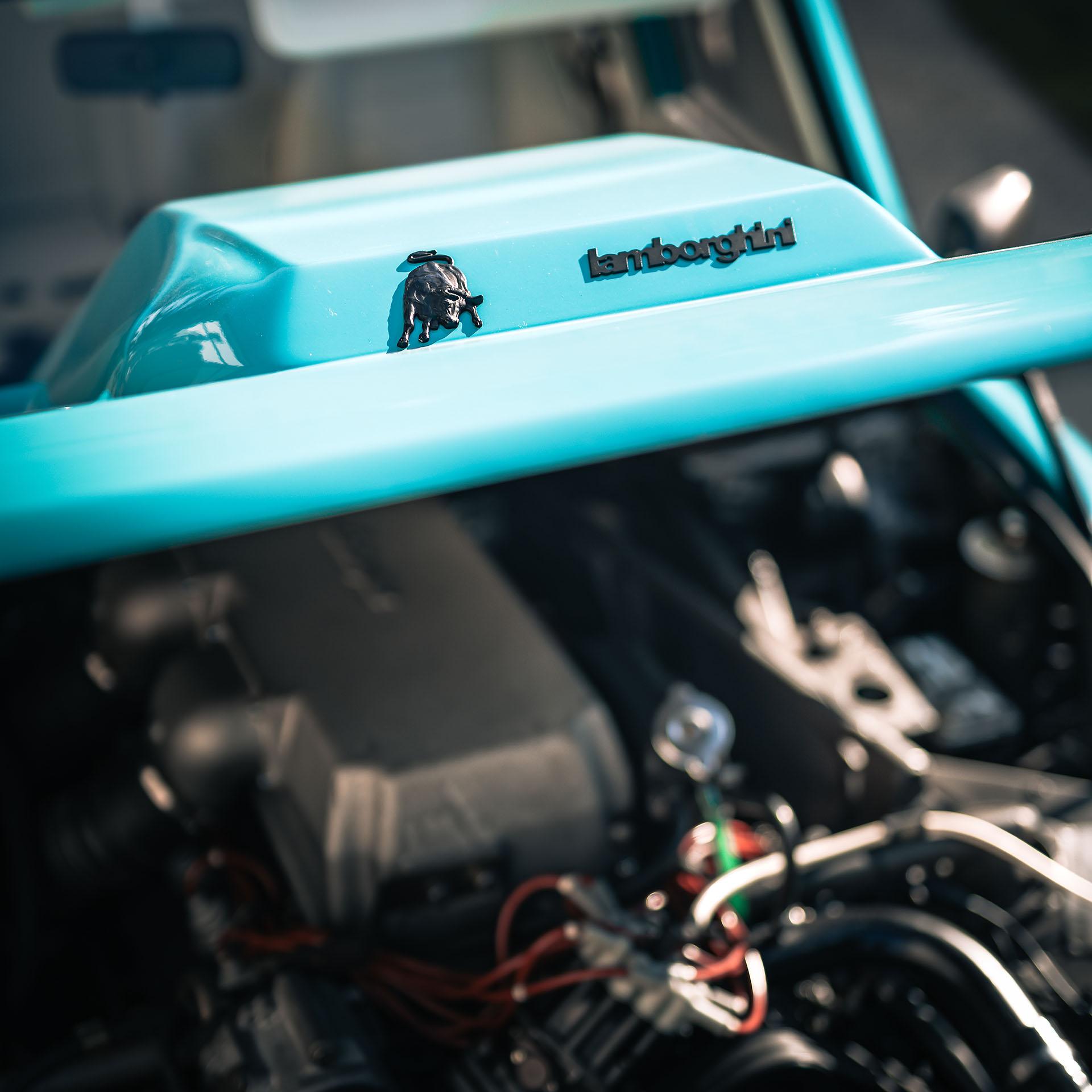We’ve just seen the first teaser shots of the Lamborghini Huracán Sterrato, a raised suspension version of the V10 supercar, but Lamborghini did something similar back in the Eighties already when they created an off-road version of the then-current Lamborghini Countach Quattrovalvole in the form of the LM002 … using the V12 engine, but now fitted at the front, add two more seats and two more doors, raise the suspension and fit monstrous Pirelli Scorpion tires instead of P Zero ones, and the result is an off-road supercar capable of carrying 4 people on the inside in style and at high speed, be it on the road or off-road.
2022 will mark the final year of Lamborghini cars with an internal combustion only V12 engine, when the last unit of the Aventador Ultimae leaves the factory doors at the House of Sant’Agata Bolognese, a reign of almost 6 decades will come to an end, the Aventador successor will still come with a V12 engine, but it will be a hybrid, and once again a completely new design from the ground up, unlike up to the Murciélago that still came with a V12 evolution that started all the way back in 1963 with the 350 GTV engine created by Bizzarrini.
While the Lamborghini Miura was the world’s first supercar, we just have to take a second look at probably the most iconic Lamborghini ever, unveiled in 1971, the Countach cemented Lamborghini’s place on the supercar market forever, the LP500 was just a prototype in 1971 that would take a few more years to get to a production stage, in the end, a total of 1999 + 1 units of the Countach would be built between 1973 and 1990 in 1999 + 1 unit, but another Lamborghini really set itself apart as the first production high-performance off-road vehicle, the impressive LM 002, of which about 300 units would be built between 1986 and 1993, taking the performance and driving pleasure of a grand tourer away from paved roads.
We all know Countach isn’t related to Bull Fighting, it is an exclamation in the Piedmontese dialect “Countach” is used to describe something really out of this world, never seen before, and both Bertone and Ferruccio Lamborghini agreed it would be a great name for this new concept car. Originally, the Countach LP500 with her 60° V12 engine mounted in the rear-longitudinal position, an innovative solution from Lamborghini, also note that this prototype came with a nearly 5-liter displacement (4971 cc) and delivered a healthy 440 hp. Initially, the Countach LP 500 was intended as a kind of study concept, being so futuristic (the prototype even had a digital display to show various functions, like a check computer) Ferruccio wanted to ‘test the waters’ and he had no intention to start building the Countach, but the response at the show was so great that, even before the end of the Geneva show, Ferruccio Lamborghini decided to put the Countach into production, he subsequently didn’t order any additional Miura SV bodies from Bertone. The bright yellow LP 500 was a true one-off, albeit heavily modified over a period of 3 years during extensive road tests with Bob Wallace behind the wheel, sadly this unique car was later destroyed in the crash tests required for homologation on March 21, 1974, the wreck was discarded years later and no longer exists today.
Unfortunately, in the early Seventies, Lamborghini couldn’t get the 440hp 5-Liter V12 from the LP 500 to work for a production car, so by the time the Countach went into production, in late 1973, the name changed to LP 400 as the V12 was downsized by about 20% to 4-Liter as we’ve seen in the Miura, now delivering 375 hp at 8000 rpm, these early, narrow-body Countach were also known as the “Periscope” thanks to an indent in the roof where the interior rearview mirror ‘peeked’ through, in the end, 152 units of the Countach LP400 would leave the factory gates in Sant’Agata before the LP400 S took over in 1978, and this would be the shape of the Countach that would adorn so many bedroom walls as a poster, with the wide wheel arch extensions and deep ‘chin’ spoiler at the front, there was a rear wing, but Lamborghini adviced not to mount it as it increased drag and effectively slowed the car down, but many enthusiasts requested it anyway, and you have to admit, a Countach needs that high rear wing, just for looks. Not only did the aesthetics change for the LP400 S, and those additional wheel arches were a necessity in fact, as the frame and chassis were modified with a different suspension so those massively wide 345mm Pirelli P7 tires were covered by bodywork and could be as level to the road as possible at all times.
Strangely enough, it would be a movie that really made the Lamborghini Countach famous around the world, when a black, modified 1979 Countach LP 400 S model made her in the 1981 movie The Cannonball Run as a leading character in the film, the additional antennas were one thing, but what really made this specific Countach stand out were the 12 exhaust pipes at the rear and the extra wing fitted over the front hood and fenders, this was the moment when an entire generation started dreaming about a Lamborghini Countach.
The Countach LP400 S was a thing of beauty, but Lamborghini couldn’t sit still in the ever-evolving supercar market, so after just 235 units they enlarged the V12 engine to nearly 5-Liters and called her the LP500 S in 1982, to be exact the capacity was about 4.8 liters (4754 cc), but LP480 S just didn’t sound right for this new 375 hp legend, the competition didn’t take long to catch up again in the everlasting race to have ‘the fastest production car in the world’, so after only two years and 323 units, it was time for what we can safely say is the most awaited Countach ever, the 1984 Quattrovalvole, considered by many to be the best combination of aesthetics, performance, reliability, and comfort.
And this time they really could call it the Countach LP500 QV as the engine not only received four valves per cylinder but the classic V12 was also enlarged to 5.1 liters (5167 cc) with a power boost up to a very impressive 455 hp at 7000 rpm in the mid-Eighties, and finally Lamborghini managed to get the Quattrovalvole officially homologated for and imported to the United States for the first time, but sadly that impressive stack of six double barrel Weber carburetors had to be by electronic fuel injection.
It quickly became clear the US market was the place to be for the Lamborghini Countach, and this was reflected in the production numbers, the Countach Quattrovalvole was in production until 1988, after which 631 units were built, almost as much as the LP400, LP400 S, and LP500 S combined (710 units). But now it was time to create a celebration model, so in 1988 the Countach 25 Anniversario, to celebrate the 25 years since the founding of Automobili Lamborghini in 1963, took over with the same engine, but with different styling for improved aerodynamics, while a few body panels were now made of composite material, the interior was made more luxurious with electric powered seats, do note that you could have very thin bucket seats as an option on the 25th Anniversario model.
Keep in mind we’re now in 1988, roughly 17 years after the Countach LP500 was shown to the public in Geneva, and the 25th Anniversario still made people dream about owning a Countach, and this model would become the best-selling in the series, with a total of 658 units, making the overall Countach production tally up to 1,999 units, the final Lamborghini Countach built, finished in Grigio Metallizzato (metallic gray) with gray interior, rolled off the assembly line on July 4, 1990, and went straight to the MUDETC, the company museum in Sant’Agata Bolognese.
Didn’t we mention there were 1,999 + 1 Lamborghini Countach built, so where does that +1 come from then? Simple, Lamborghini only had chassis numbers on the actual production cars, so the first Countach is the LP 400 chassis number 1120001 that was built in 1973, initially red and later repainted green, with several aesthetic differences from the cars that would follow, just like the last Countach, this green production prototype is also on display in the official factory museum in Sant’Agata, but that leaves the +1, well that’s the actual yellow Countach LP500 prototype, physically made by Bertone, this car didn’t get a Lamborghini chassis number but a Bertone one.
Back in 1977, Lamborghini took a careful dip in the world of off-road cars with the Cheetah, but the prototype didn’t really convince the military, so they came up with the LM001 prototype, Lamborghini Military prototype number 1 with a V8 engine fitted behind the four seats, not a great idea either, by 1982 the Lamborghini engineers were on the right track with the LMA002, finally they remembered ‘the Lamborghini way’, a tubular chassis with a massive V12 up front, now that’s an off-road beast, still with a spartan interior as this was a Lamborghini Military after all.
Still, the armed forces in the world weren’t too impressed by this prototype from a small exotic car manufacturer, and orders for the LMA002, which used the V12 from a Countach LP500 S by the way, didn’t really pour in, and Lamborghini went in a different direction: fit four leather seats inspired by the Countach ones in the interior, add some wood trim and even more leather around the occupants and fit a modified Quattrovalvole engine instead … and boom: a high-performance, tubular chassis off-road behemoth, unlike anything the world had seen so far. The Countach V12 was flipped around to face backward, slightly enlarged to 5.2-Liter, and mildly detuned to just 450hp so the four-wheel drive transmission with a central differential and low gears weren’t destroyed while driving. A prototype of the new Lamborghini LM002 was shown at the 1986 Brussels Motor show in January while the final production version was unveiled later that year in Turin, initially with the original carburetor setup on the V12, but about halfway through the production life, the LM002 switched to fuel injection instead, the difference would be visible in the size of the ‘hump’ on the engine cover.
While it didn’t seem many armed forces ordered a Lamborghini LM002, that didn’t keep people from doing some very special things to their off-road Raging Bull, according to factory records there is one LM 002 that got the massive 7.2-liter 700 hp V12 engine usually used in off-shore boats fitted, some sources call this one the LM004, while another LM002 was prepared under the guidance of technical advisor Sandro Munari, a former World Rally champion, to compete in endurance races in the desert like the famous Paris-Dakar rally. The story goes that a Lamborghini LM002 could effortlessly pull a Leopard tank, while a US car magazine nicknamed it the “Rambo Lambo” because of its muscular appearance, but mainly because American actor Sylvester Stallone who starred in the movie Rambo several times owned an LM002 at the time. The best definition of the LM 002, however, was given by an Italian journalist who wrote after test driving it: “At 200 km/h, the LM 002 doesn’t slice through the air. It smacks it with pride.”
Check out our extensive gallery on the LM002 and the Countach below:


